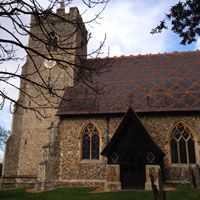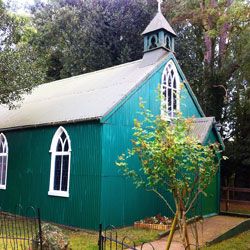Advent Day 16 - Thaxted Church
Posted on
There’s a reason why Thaxted church is sometimes referred to as “the cathedral of Essex”. Sited on a hill, and with a tower that’s 181 feet high, the church of St John is far bigger than most parish churches in the area, and as a result it dominates the landscape.
 local area the walls are flint rubble, while the square tower has buttresses and a Hertfordshire spike. Inside the church is a collection of memorials, including one from the 17th century depicting Mary and Ann, the two wives of a man named John Rowley, and some 18th century marble memorials.
local area the walls are flint rubble, while the square tower has buttresses and a Hertfordshire spike. Inside the church is a collection of memorials, including one from the 17th century depicting Mary and Ann, the two wives of a man named John Rowley, and some 18th century marble memorials.  Although I'd been past the main church at Littlebury in the past, I only spotted the tiny chapel of St Peter at Littlebury Green when I drove through the hamlet.
Although I'd been past the main church at Littlebury in the past, I only spotted the tiny chapel of St Peter at Littlebury Green when I drove through the hamlet.